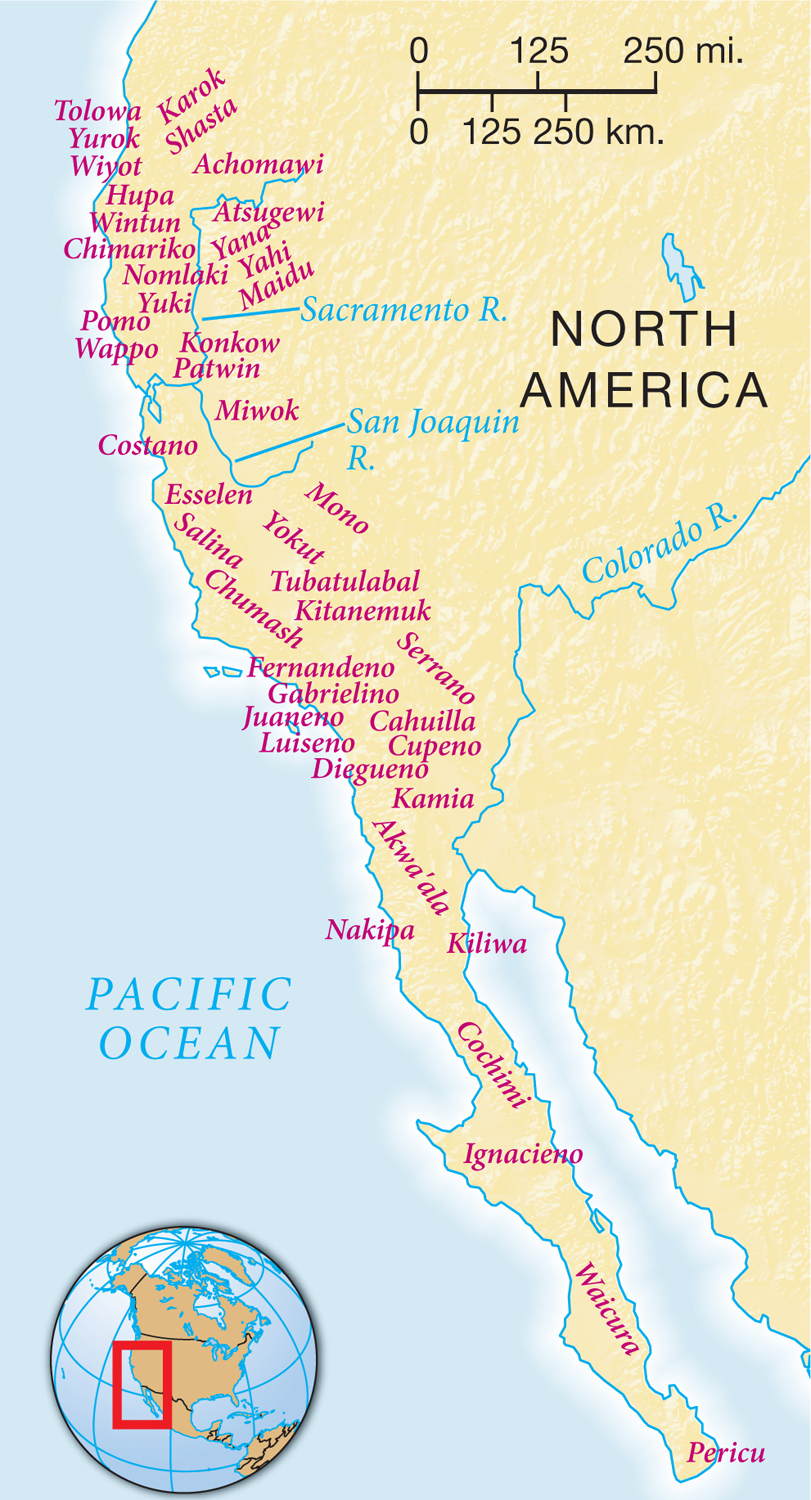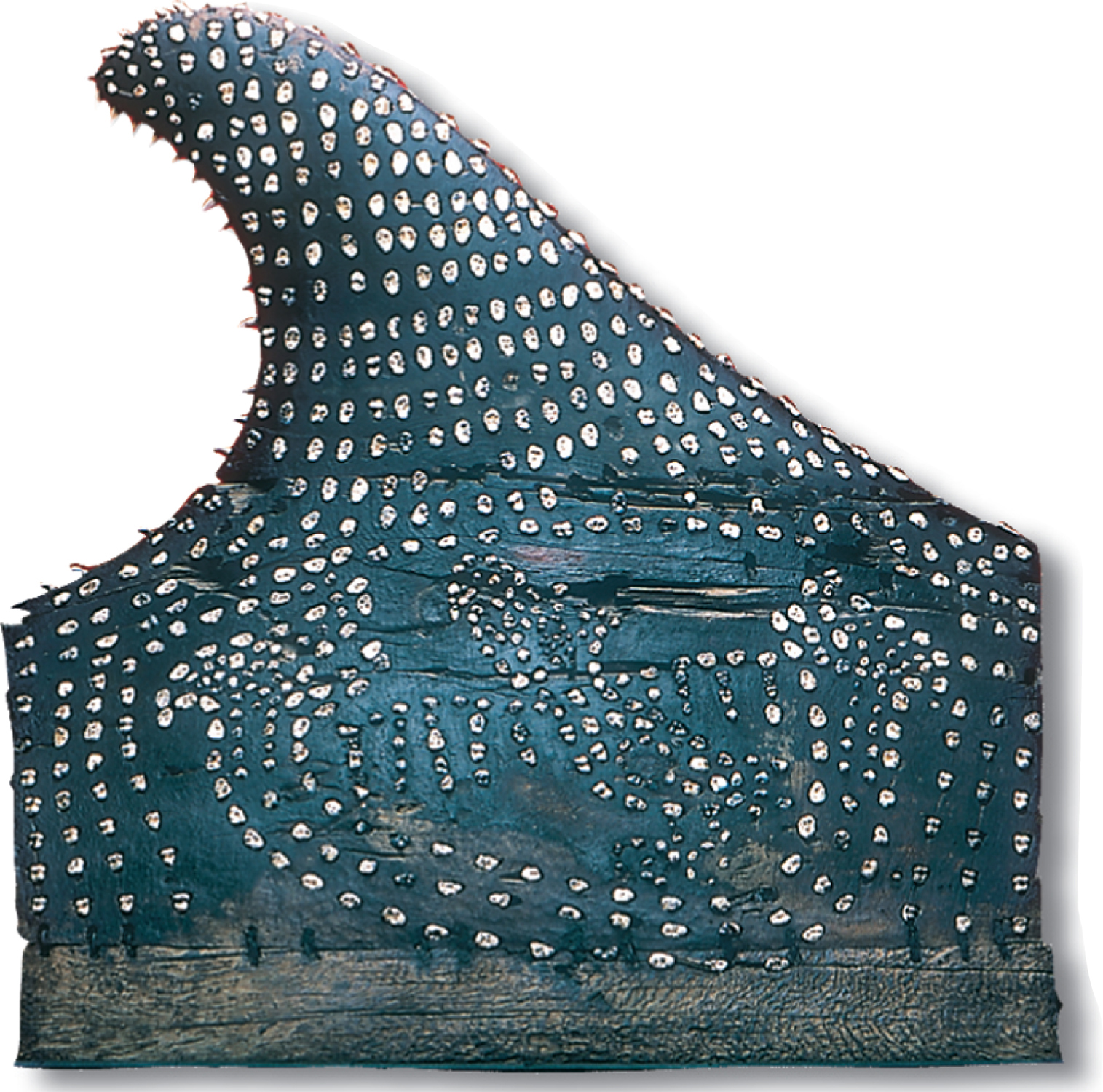Pacific Coast Cultures

Ancient California Peoples
The richness of the natural environment made present-day California the most densely settled area in all of ancient North America. The land and ocean offered such ample food that California peoples remained hunters and gatherers for hundreds of years after AD 1492. The diversity of California’s environment also encouraged corresponding variety among native peoples. The mosaic of Archaic settlements in California included about five hundred separate tribes speaking some ninety languages, each with local dialects. No other region of comparable size in ancient North America exhibited such cultural variety.
The Chumash, one of the many California cultures, emerged in the region surrounding what is now Santa Barbara about 5000 BP. Comparatively plentiful food resources—especially acorns—permitted Chumash people to establish relatively permanent villages. Conflict, probably caused by competition for valuable acorn-gathering territory, often broke out among the villages, as documented by Chumash skeletons that display unmistakable signs of violence. Although few other California cultures achieved the population density and village settlements of the Chumash, all shared the hunter-gatherer way of life and reliance on acorns as a major food source.
Another rich natural environment lay along the Pacific Northwest coast. Like the Chumash, Northwest peoples built more or less permanent villages. After about 5500 BP, they concentrated on catching whales and large quantities of salmon, halibut, and other fish, which they dried to last throughout the year. They also traded with people who lived hundreds of miles from the coast. Fishing freed Northwest peoples to develop sophisticated woodworking skills. They fashioned elaborate wood carvings that denoted wealth and status, as well as huge canoes for fishing, hunting, and conducting warfare against neighboring tribes. Archaic northwesterners often fought with one another over access to prime fishing sites.

Ozette Whale Effigy This carving of a whale fin decorated with hundreds of sea otter teeth was discovered along with thousands of other artifacts of daily life at Ozette, an ancient village on the tip of the Olympic Peninsula in present-day Washington that was inundated by a catastrophic mud slide about five hundred years ago. The fin illustrates the importance of whale hunting to the residents of Ozette. Richard Alexander Cooke III.

